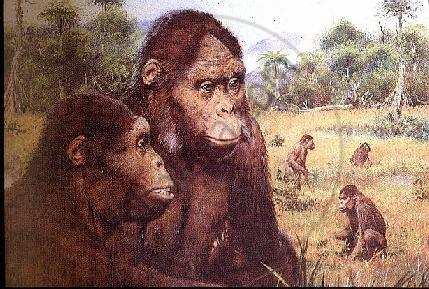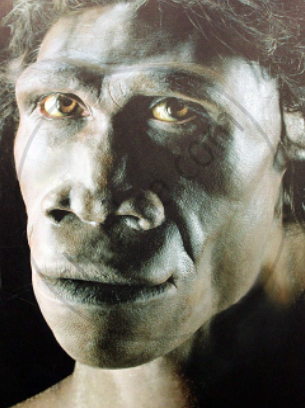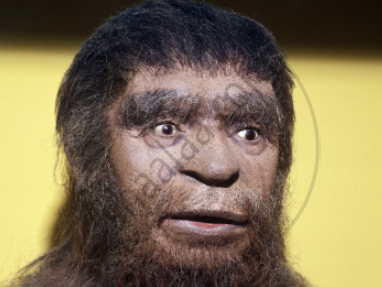Topics
Reproduction in Lower and Higher Plants
- Reproduction
- Mode of Reproduction in Plant
- Asexual Reproduction in Plant
- Vegetative Reproduction
- Natural Vegetative Reproduction
- Artificial Vegetative Reproduction
- Sexual Reproduction in Flowering Plants
- Pre-fertilization in Plant: Structure and Events
- Pre-fertilization in Plant: Stamen (Male Reproductive Unit)
- Pre-fertilization in Plant: Microsporangium
- Structure of Microspore Or Pollen Grain
- Pre-fertilization in Plant: Pistil (Female Reproductive Unit)
- Pre-fertilization in Plant: Megasporangium
- Pre-fertilization in Plant: Formation of Embryo Sac
- Pollination
- Self Pollination (Autogamy)
- Cross Pollination
- Agents of Pollination
- Outbreeding Devices
- Pollen Pistil Interaction
- Fertilization Process
- Post Fertilisation in Plant: Structures and Events
- Development of Endosperm
- Post Fertilization in Plant: Development of Embryo (Embryogeny)
- Formation of Seed and Fruit
- Apomixis
- Parthenocarpy
- Polyembryony
- Kinds of Pollination
Reproduction in Lower and Higher Animals
- Reproduction
- Mode of Reproduction in Animal
- Asexual Reproduction in Animal
- Sexual Reproduction in Animals
- Human Reproduction
- The Male Reproductive System
- The Female Reproductive System
- Menstrual Cycle (Ovarian Cycle)
- Gametogenesis
- Fertilization in Human
- Embryonic Development in Human
- Implantation in Human
- Pregnancy in Humans
- Placenta (Growth) in Human
- Parturition (Birth) in Human
- Lactation in Human
- Reproductive Health
- Population Stabilisation and Birth Control
- Medical Termination of Pregnancy (MTP)
- Sexually Transmitted Diseases (STD)
- Infertility
- Gastrulation in humans
Inheritance and Variation
- Heredity or Inheritance
- Gregor Johann Mendel – Father of Genetics
- Genes and Genetic
- Mendelian Inheritance - Mendel’s Law of Heredity
- Back Cross and Test Cross
- Deviations from Mendel’s Findings
- Chromosomal Theory of Inheritance
- Chromosomes - The Carriers of Heredity
- Linkage and Crossing Over
- Autosomal Inheritance
- Sex Linked Inheritance
- Sex Determination
- Genetic Disorders
Molecular Basis of Inheritance
- Deoxyribonucleic Acid (DNA) and Its Structure
- The Genetic Material is a DNA
- Packaging of DNA Helix
- DNA Replication
- Protein Synthesis
- Regulation of Gene Expression
- Operon Concept
- Genomics
- Human Genome Project
- DNA Fingerprinting Technique
- Genetic Code
Origin and Evolution of Life
- Origin and Evolution of Universe and Earth
- Theories of Origin of Life
- Chemical Evolution of Life (Self-assembly Theory of the Origin of Life)
- Darwinism
- Mutation Theory
- Modern Synthetic Theory of Evolution
- Organic Evolution
- Hardy Weinberg’s Principle
- Adaptive Radiation
- Evidences for Biological Evolution
- Speciation
- Geological Time Scale
- Human Evolution
- Theories of Biological Evolution
Plant Water Relation
- Plant Water Relation
- Properties of Water
- Water absorbing organ
- Water Available to Roots for Absorption
- Means of Transport in Plants
- Concept of Imbibition
- Simple Diffusion
- Concept of Osmosis
- Osmotic Pressure
- Facilitated Diffusion
- Turgidity and Flaccidity (Plasmolysis)
- Active Transport
- Passive Transport
- Water Potential (ψ)
- Path of Water Across the Root
- Translocation of Water (Ascent of Sap)
- Transport of Mineral Ions
- Transport of Food
- Transpiration
- Types of Transpiration
- Structure of Stomatal Apparatus
- Significance of Transpiration
Plant Growth and Mineral Nutrition
- Plant Growth
- Phases of Plant Growth
- Conditions Necessary for Plant Growth
- Plant Growth Rate
- Plant Growth Curve
- Differentiation, De-differentiation, Re- Differentiation
- Plant Development
- Plant Plasticity
- Plant Hormones
- Types of Plant Hormones: Auxins
- Types of Plant Hormones: Gibberellins
- Types of Plant Hormones: Cytokinins
- Types of Plant Hormones: Ethylene
- Types of Plant Hormones: Abscisic Acid (ABA)
- Photoperiodism
- Vernalization (Yarovization)
- Plant Mineral Nutrition
- Nitrogen Cycle
Respiration and Circulation
- Respiration
- Organs of Respiratory Exchange
- Human Respiratory System
- Mechanism of respiration-Breathing
- Regulation of Breathing / Respiration
- Modified Respiratory Movements
- Disorders of Respiratory System
- Transportation in Living Organisms
- Circulation in Animals
- Types of Closed Circulation
- Blood Circulatory System in Human
- Composition of Blood: Plasma (The Liquid Portion of Blood)
- Composition of Blood: Red Blood Cells (Erythrocytes)
- Composition of Blood: White Blood Cells (Leukocytes)
- Composition of Blood: Blood Platelets (Thrombocytes)
- Function of Platelets - Clotting of Blood (Coagulation)
- Human Heart
- Working mechanism of human heart
- Blood Vessels
- Blood Pressure (B.P.)
- Electrocardiogram (ECG)
- Lymph and Lymphatic System
- Mechanism of respiration - Internal respiration
- Mechanism of respiration - External respiration
- Mechanism of respiration - Cellular respiration
Control and Co-ordination
- Control and Co-ordination
- Nervous System in Hydra
- Nervous System in Planaria (Flatworm)
- Neural Tissue
- Neuron (Or Nerve Cell) and Its Types
- Neuroglial Cells (Or Glial Cells)
- Human Nervous System
- Central Nervous System (CNS)
- The Human Brain - Forebrain
- The Spinal Cord
- Peripheral Nervous System (PNS)
- Sensory Receptors
- Human Eye
- Human Ear
- Disorders of Nervous System
- Chemical Coordination
- Human Endocrine System
- The Hypothalamus
- Pituitary Gland or Hypophysis Gland
- The Pineal Gland
- Thyroid Gland
- Parathyroid Gland
- Thymus Gland
- Adrenal Gland (Suprarenal Gland)
- Pancreas (Islets of Langerhans)
- Reproductive Glands (Gonads)
- Synapse - Properties of nerve fibres
- Synapse - Types of synapse
- Transmission of nerve impulse
- Generation of nerve impulse
- Reflex Action
- Autonomic Nervous System (ANS)
- Diffuse Endocrine Glands
Human Health and Diseases
- Defence System in Our Body: Immune System
- Immunity
- Types of Immunity
- Vaccination and Immunization
- Structure of Antibody
- Disease
- Protozoan Diseases
- Helminthic Diseases
- Bacterial Diseases
- Viral Diseases
- Fungal Diseases
- Vector Borne Diseases
- Cancer
- Adolescence
- Addiction
- Drug Abuse
Enhancement of Food Production
- Improvement in Food Production
- Plant Breeding
- Tissue Culture
- Single Cell Protein (SCP)
- Biofortification
- Animal Husbandry (Livestock)
- Animal Breeding
- Dairy Farming
- Poultry Farming
- Apiculture (Bee Farming)
- Pisciculture (Fish Farming)
- Sericulture
- Lac Culture
- Microbes in Human Welfare
- Microbes in Industrial Production
- Microbes in Sewage Treatment
- Microbes in Energy Generation
- Microbes as Biocontrol Agents
- Microbes as Biofertilizers
Biotechnology
- Biotechnology
- Process and Principles of Biotechnology
- Methodology for rDNA Technology
- Commercial Applications of Biotechnology
- Bioethics
- Effects of Biotechnology on the Environment
- Biopatent and Biopiracy
- Transgenic Plants
- Transgenic animals
- Effects of Biotechnology on Human Health
- Tools and techniques for gene cloning/ rDNA technology
Organisms and Populations
- Organisms and the Environment Around
- Habitat
- Niche
- Structure and function of an Ecosystem
- Adaptations and Its Types
- Population
- Population Interactions
- Organisms and Populations
Ecosystems and Energy Flow
- Ecosystem
- Structure and function of an Ecosystem
- Concept of Energy Flow in an Ecosystem
- Classification of Animal
- Trophic Level
- Food Chain
- Food Web
- Ecological Pyramids
- Nutrient Cycles
- Ecological Succession
- Ecosystem Services
- Productivity
- Decomposition
- Phosphorus Cycle
- Carbon Cycle
Biodiversity, Conservation and Environmental Issues
- Biodiversity
- Levels of Biodiversity
- Patterns of Biodiversity
- Biodiversity Current Scenario
- Loss of Biodiversity
- Conservation of Wildlife
- Biological Diversity Act, 2002
- Environmental Issues
- Air Pollution and Its Causes
- Noise Pollution
- Water Pollution and Its Causes
- Green House Effect
- Preventive Measures of Green House Effect
- Global Warming
- Preventive Measures of Global Warming
- Ozone Layer Depletion
- Deforestation and Its Causes
- Mission Harit Maharashtra
- Conservation of Biodiversity
Excretion and Osmoregulation
- Modes of Excretion: Ammonotelism, Ureotelism, and Uricotelism
- Human Excretory System
- Function of the Kidney - “Production of Urine”
- Regulation of Kidney Function
- Common Disorders of the Urinary System
Human Reproduction
Notes
Origin and evolution of man and apes:
- Chromosomal similarities:
(i) The banding pattern of chromosome no. 3 and 6 of human and chimpanzee is 100% similar.
(ii) Number of chromosomes is approx. same in humans (46) and apes (48).
(iii) DNA content and DNA matching are the same in both. This similarity is more than 99% with chimpanzees, 94% with Gibbon, and 88% with Rhesus monkey.
- The skull of the baby chimpanzee is more like an adult human skull than an adult chimpanzee skull.
- The composition of Hb is the same in both. Only one amino acid is different in humans and gorillas.
- The blood group of AB series is present in both and plasma protein is also the same.
- The menstruation cycle is present in females of both.
- The tail is absent in both and has grasping hands.
Apes
Human
1.
Semi-erect posture
Complete erect posture with bipedal locomotion
2.
The thick growth of hair on the whole body
The thick growth of hair only on certain parts of the body.
3.
Less cranial capacity (450 cc) and less intelligence.
More cranial capacity (1300-1600 cc) and more intelligence.
4.
Forelimbs longer than hind limbs
Forelimbs shorter than hind limbs
5.
'U' shaped jaw & chin absent
Semicircular jaw and chin present
6.
Thumb is parallel to plam
Thumb is opposable.
Human Evolution:
(i) The banding pattern of chromosome no. 3 and 6 of human and chimpanzee is 100% similar.
(ii) Number of chromosomes is approx. same in humans (46) and apes (48).
(iii) DNA content and DNA matching are the same in both. This similarity is more than 99% with chimpanzees, 94% with Gibbon, and 88% with Rhesus monkey.
| Apes | Human | |
| 1. | Semi-erect posture | Complete erect posture with bipedal locomotion |
| 2. | The thick growth of hair on the whole body | The thick growth of hair only on certain parts of the body. |
| 3. | Less cranial capacity (450 cc) and less intelligence. | More cranial capacity (1300-1600 cc) and more intelligence. |
| 4. | Forelimbs longer than hind limbs | Forelimbs shorter than hind limbs |
| 5. | 'U' shaped jaw & chin absent | Semicircular jaw and chin present |
| 6. | Thumb is parallel to plam | Thumb is opposable. |

1. Ape Fossils:
About 15 mya, primates called Dryopithecus and Ramapithecus were existing. They were hairy and walked like gorillas and chimpanzees.
(i) Proconsul/ Dryopithecus:
- It is considered a common ancestor of man and apes.
- Dryopithecus is considered as direct ancestors of modern-day apes.
- They had semi-erect posture, thick hair, U-shaped jaws, larger and sharper teeth and were vegetarian.
- They walked on four legs and their forelimbs were longer than hind limbs. - They were forest dwellers and spent most of their time on the trees.
(ii) Ramapithecus and Shivapithecus: Fossils discovered from Shivalik hills in India.
(iii) Kenyapithecus:
- Fossils were discovered in Kenya.
- They are considered ancestors of human, similar in characteristics to Dryopithecus, but spent most of the time on the land.
- Ramapithecus was more man-like while Dryopithecus was more ape-like.
2. Ape man fossils:
- Australopithecus Prof. Raymond Dart discovered a fossil of the skull of a 5-6 years old baby from the Pliocene rocks of the Tuang region (S. Africa) and named it Tuang baby. Later he renamed it A. africanus (African apeman).
- 2 mya, Australopithecines probably lived in East African grasslands.
- Evidence shows they hunted with stone weapons but essentially ate fruit.
- It is also considered a connecting link between apes and man.
(i) Ape-like characters:
- The less cranial capacity (600 c.c.)
- The thick growth of hair
- U-shaped jaw (prognathous face)
- Larger and sharper teeth
(ii) Man-like characters:
- Complete erect posture and Bipedal locomotion (the first man who stood erect)
- Forelimbs shorter than hind limbs
- Vertebral column with distinct lumber curve
3. Prehistoric Man:
A number of other species of Homo appeared and became extinct from time to time on the evolutionary sense before the origin of Homo sapiens. These extinct species are called prehistoric species of man.
4. Homo habilis:
- The first human-like being
- The first man who made tools of stones for hunting animals hence called as first tool maker man or Handy man.
- They probably did not eat meat.
- The brain capacities were between 650-800cc.
- Its fossils were discovered by Dr. Leakey from 2 million years old rocks in Africa.
- They lived in caves.

5. Homo erectus:
- They existed about 1.5 million years ago.
- They had a large brain with a cranial capacity of around 900 cc.
- They were cave dwellers and probably ate meat.
- Many subspecies are discovered of Homo erectus as given below.
i) Java man (Homo erectus erectus/ Pithecanthropus erectus):
- Its fossils were discovered in java in 1891.
- The first man who used fire for huntinA)g, protection, and cooking.
- They used tools of bones and stones.
- Their cranial capacity was 800-1000cc (avg.900 cc)
- They were omnivorous and cannibalism have also found.

ii) Peking man (Homo erectus pekinensis/ Sinanthropus erectus):
- W.C. Pei discovered the fossils from china.
- They used fire for cooking meat and for protection
- They used sharp chisel-shaped tools of stones/bones for cutting and killing animals
- Their cranial capacity was 850-1300cc (avg. 1050cc)
- They were omnivorous and cannibalism has also found.
iii) Heidelberg man:
- Its fossil was recovered in form of a lower jaw from Heidelberg in Germany.
- It is believed that this man evolved as a branch from the main line of evolution and got extinct after some time.
6. Homo sapiens:
- Many subspecies are discovered of Homo sapiens as given below:
i) Neanderthal man (Homo sapiens neanderthalensis):
- They lived near east and central Asia between 1,00,000 - 40,000 years back, fossil was discovered by Fulhrott in the Neanderthal valley of Germany.
- They had a brain size of 1400cc (same as a modern man).
- They used hides (skin of animals) to protect their body.
- They buried their dead and probably believed in the immortality of soul.
- They lived in huts and omnivorous by nature.
- Development of speech centre and language started.

ii) Cromagnon man (Homo sapiens fossilis):
- Origin and evolution 50,000 to 10,000 years ago.
- Fossils were discovered by Mac Gregor from Cromagnon rocks of france.
- They had a cranial capacity of 1650 c.c. (maximum)
- They lived in caves and were omnivorous by nature.
- They had a larger forehead and well-developed chin.
- Semi-circular jaw and orthognathous face.
- Speech and language centre were well developed in them.
- They wore clothes of animal skin.
- This man was a hunter and used domesticated dogs in hunting, hence domestication was started by this man.
- They also painted beautiful paintings on cave walls. Pre-historic cave art developed about 18,000 years ago. Such cave paintings by a prehistoric man can be seen at the Bhimbetka rock shelter in the Raisen district of Madhya Pradesh.
iii) Modern man (Homo sapiens sapiens):
- During ice age between 75,000-10,000 years ago modern Homo sapiens arose.
- It arose in Africa and moved across continents and developed into distinct races (Caucasoid, Negroid, Mongoloid, and Australoid).
- This is the man of today having a brain capacity of 1300 - 1600 c.c (avg. 1450cc).
- This man has a well-developed chin, well-developed speech center, a smaller forehead, and reduced body hair.
- Semi-circular jaw and orthognathous face. - It is omnivorous by nature.
- Agriculture was also started by this man. Agriculture came around 10,000 years back and human settlements started.
